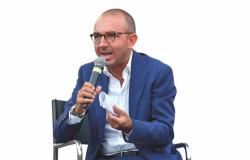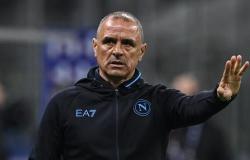
50 years ago, on 20 April, Ferruccio Galmozzi, Mayor of Bergamo from 1946 to 1956, died. His city pays homage to his memory with a conference – with free admission and entitled “Ferruccio Galmozzi, between reconstruction and economic miracle” – scheduled Saturday 20 April from 9.30 am in the room named after Galmozzi, in via Tasso 4.
The Municipality of Bergamo and the Bergamo Archive thus remember a mayor to whom the city of Bergamo owes a lot, first citizen in a very delicate moment for the Bergamo community, which was emerging from the war in a very complicated economic situation.
Mayor Giorgio Gori will open the proceedings of the conference, coordinated by Francesca Tasca: followed by speeches by Chiara Cremaschi (The Mayor’s notes), by Alessandro Persico (Between apostolate and politics: Ferruccio Galmozzi in the Catholic movement of the early twentieth century), by Gianluigi Della Valentina (The uphill road. Reconstruction and start of the economic miracle), by Roberto Cremaschi (An Administration with its feet on the ground. Ferruccio Galmozzi Mayor of Bergamo 1946-1956), by Bernardo Pasinelli (The collection archive of Ferruccio Galmozzi 1853-2011).
Political commitment
Ferruccio Galmozzi was elected municipal councilor on the lists of the Popular Party in 1922 and was councilor for health of the municipality of Bergamo with the mayor Paolo Bonomi until April 1923, when the council and municipal councilors resigned – as he then recalled in his inauguration speech in mayor on 3 April 1946 – “due to the impossibility of carrying out their mandate with dignity and with the necessary freedom of action“. He refused to take up the National Fascist Party membership card when it was imposed on civil servants but was not fired, apparently because the hospital management covered up the decision by not reporting him to the relevant bodies.
During the 20 months of German occupation he made his medical work available several times to the partisans and the politically persecuted. Representative of the DC in the CLN of Bergamo together with Cristoforo Pezzini from April 1944, he was appointed provisional president of the Province after the liberation, in 1946 he was the first elected by number of preferences to the municipal council of Bergamo on the list of the DC while his son-in-law Carlo Cremaschi , husband of his second daughter Marussia, was one of the four people from Bergamo elected to the Constituent Assembly.
Elected mayor, he proposed to the representatives of the Socialist Party to join the majority, an offer which was rejected. He held the position until 1956, after being re-elected in 1951. In the following decade the junta was committed to remedying the economic and social damage caused by the war and German occupation and to restoring the budget of the municipality which in 1946 was in heavy deficit. The main achievements were the construction of new accommodation, including the Villaggio degli Sposi, designed to offer homes to young couples, in which the street named after him is now located, the rehabilitation of the upper city, the acquisition of the city walls Venetian, of the monumental complex of Sant’Agostino, of the Carmine cloister and of the Suardi Park in the lower city. With a counter-current position he spoke out against the institution of office allowances for mayors and for the decade of his two administrations neither he nor the councilors received this allowance. The ten years of administration earned shared appreciation for the accomplishments accomplished. Guido Piovene, describing the character ‘of prose, of Lombard practicality’ which characterized the local administration of Bergamo, notes that ‘Bergamo is Lombardy. Its mayor is one of the best in Italy’.
Having finished his career as mayor in 1956, a position in which Tino Simoncini succeeded him, he retired from active politics while remaining a member of the party, and in 1958 he refused a candidacy for the Senate. Widowed in 1950, he died on 20 April 1974 at his home in Bergamo, leaving six children and 26 grandchildren.
Tags: April years Ferruccio Galmozzi passed Bergamo remembers conference Telematic helpdesk




